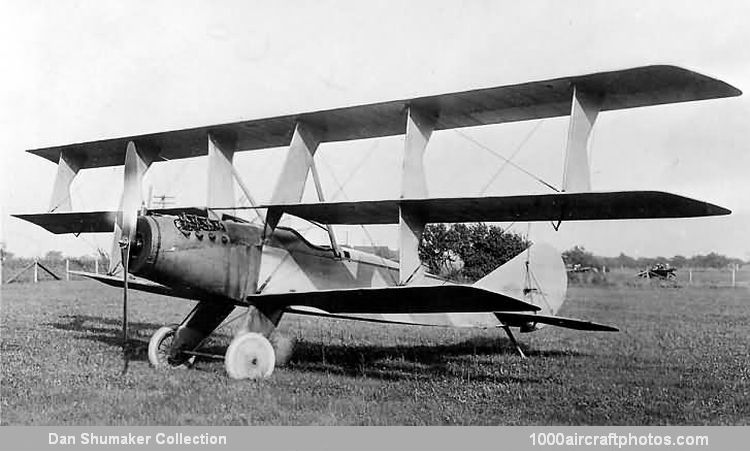09/30/2011. Remarks by Johan Visschedijk: "The Model L triplane (retrospectively designated Model 9) was a late 1916 development intended as a side-by-side two-seater suitable for training and for operation by private owners. The use of three wings was not unusual for the time. However, the extremely wide gap-chord ratio of the Model L wings compared to contemporary biplanes led Curtiss to develop a different wing strut pattern. Span of the two upper wings was equal while the bottom wing was short. The wider-than-standard fuselage terminated in a horizontal, rather than vertical, knife-edge at the tail.
The Model L became a production aeroplane, some being sold to individuals while others were used in the Curtiss flying schools. After the US entered the war, both the US Army and Navy bought limited quantities:
L: The original civil two-seater with 90 hp Curtiss OX engine.
L-1: An improved L with revised tail and strut details. This was the first time that the first variant of a designated Curtiss model was given a -1 designation instead of being designated -2 for the second configuration. The USASC acquired one when it bought three different triplane models from Curtiss and assigned serial 473.
L-2: A single-float seaplane version with 100 hp OXX engine used by both the USASC and US Navy. The first Navy model was flown with the original short bottom wing of the previous versions but this was soon enlarged to the span of the other wings to add needed lifting area to the heavier seaplane. USN serial: A291 to A293; US Army serial: 475."
